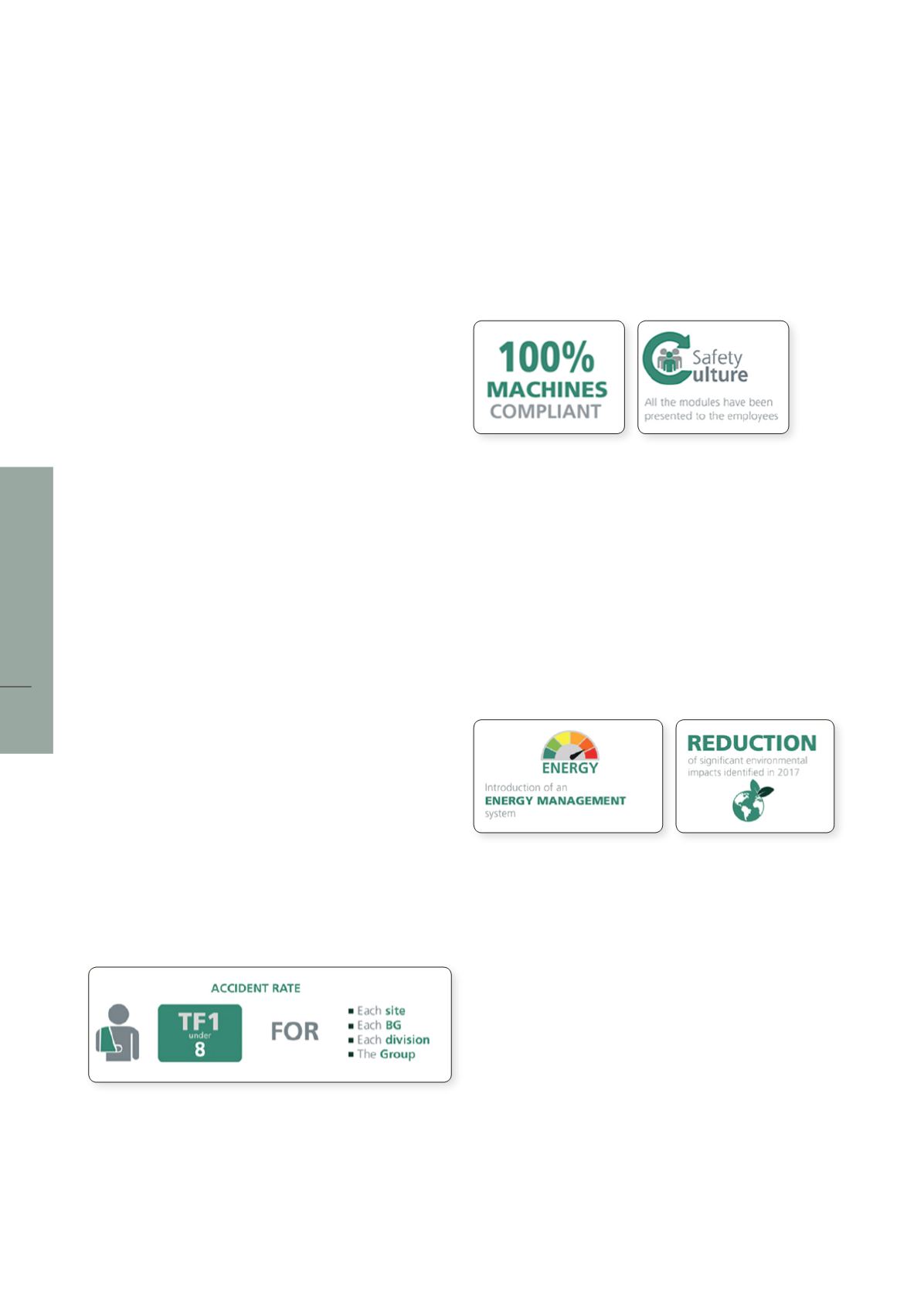

106
CORPORATE SOCIAL RESPONSIBILITY
6
LISI 2017 FINANCIAL REPORT
3.2.1
|
The HSE Steering Committee
This committee is made up of two representatives of the Senior
Management of LISI, the Group HSE Manager, HSE Managers from
each division, and the insurance broker.
Every quarter, this HSE Steering Committee defines and monitors the
Group’s HSE strategy and checks on the progress of strategic actions
in this field.
The CEO of LISI and the CEOs of the divisions of the Group take part in
the September Steering Committee.
3.2.2
|
The Steering Committee of the LISI Excellence HSE
program
The mission of this Steering Committee is to chart out and approve
the direction of the LISI Excellence HSE program. This highly
operational committee defines the tools to be deployed to meet the
HSE targets set out by Senior Management. Following this Steering
Committee, a program containing details of the working groups is
defined and approved by Senior Management.
3.2.3
|
HSE Experts
HSE Experts meet every month to take stock of the progress of the
program that the Steering Committee has defined in order to identify
any difficulties encountered and decide on how to overcome them.
3.3
|
LISI’S HSE OBJECTIVES FOR 2020
Keen to attain Operational Excellence in this field, the LISI Group has
determined ambitious targets for 2020.
It is not LISI’s intention to limit itself solely to the requirements of
the ISO 14001 and OHSAS 18001 standards. It has defined increasing
levels of requirements - “Bronze”, “Silver”, “Gold”. Thus each site of
the group must comply with a number of requirements of the “Bronze”
level of its LISI Excellence HSE program.
3.3.1
|
Health-Safety objectives
Furthermore, in the field of Health and Safety at work, LISI has set
as target that each site should have an accident rate of less than
eight workplace accidents per million of hours worked (whether
with or without lost time and whether they involve LISI employees or
temporary workers working for it).
To achieve this, LISI has set two other targets which will contribute to
reducing the accident rate.
First of all, LISI’s intention is to secure its working equipment, by
working on the compliance of its machines, in particular those that
are the most hazardous.
LISI has defined as target that 100% of machines identified as the
most hazardous should be 100% compliant.
The safety of persons working for LISI or under its control also
requires the development of a safety culture on a everyday basis.
LISI has thus developed its own safe behaviour development
program: SCP (Safety Culture Program). The first step consists in
training sessions for all managers of the Group so that they can
conduct the 18 training modules of the SCP program. Secondly,
during 15-minute sessions, these same managers will systematically
reiterate the prevention messages aimed at improving the safe
behaviour of each and every one. LISI aims at rolling out all the
modules to all employees of the Group by 2020.
3.3.2
|
Environmental objectives
Concerned about the impact of its activities on climate change, LISI
wishes to develop and implement an energy management system in
order to reduce its energy and carbon footprints.
Furthermore, LISI carried out an analysis of its environmental
impacts in 2017, following which the Group wishes to reduce its most
significant impacts by 2020.
Targets and measurable indicators will be established in the course
of 2018.


















